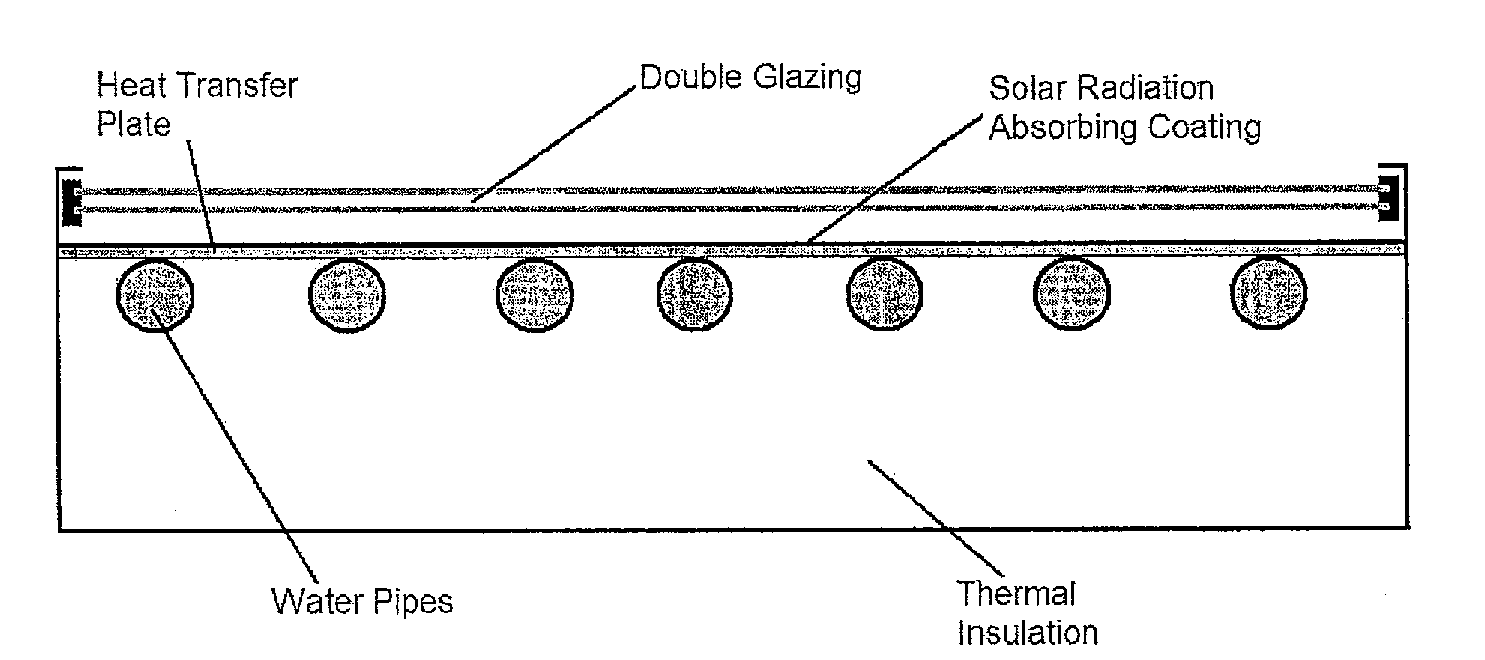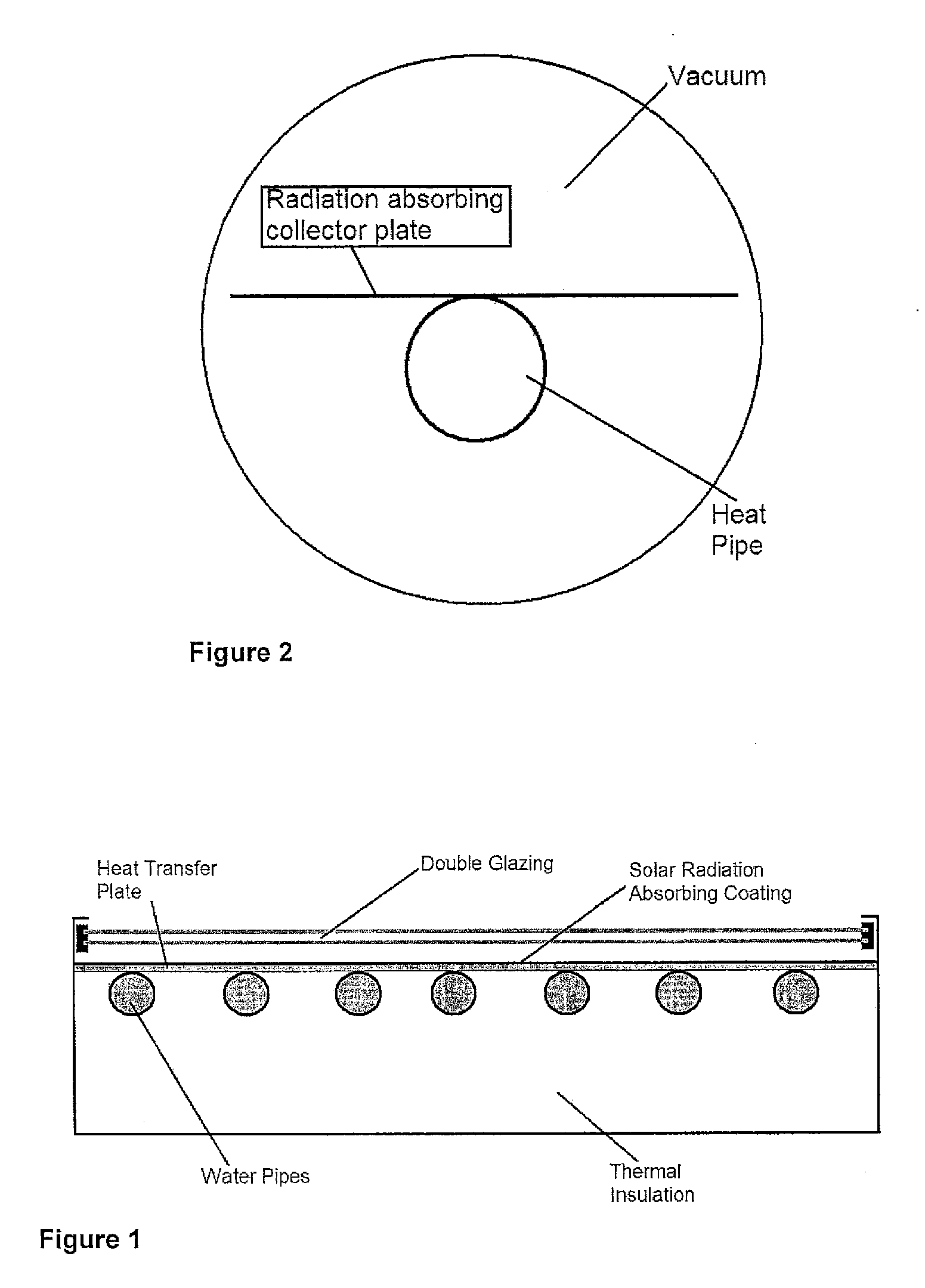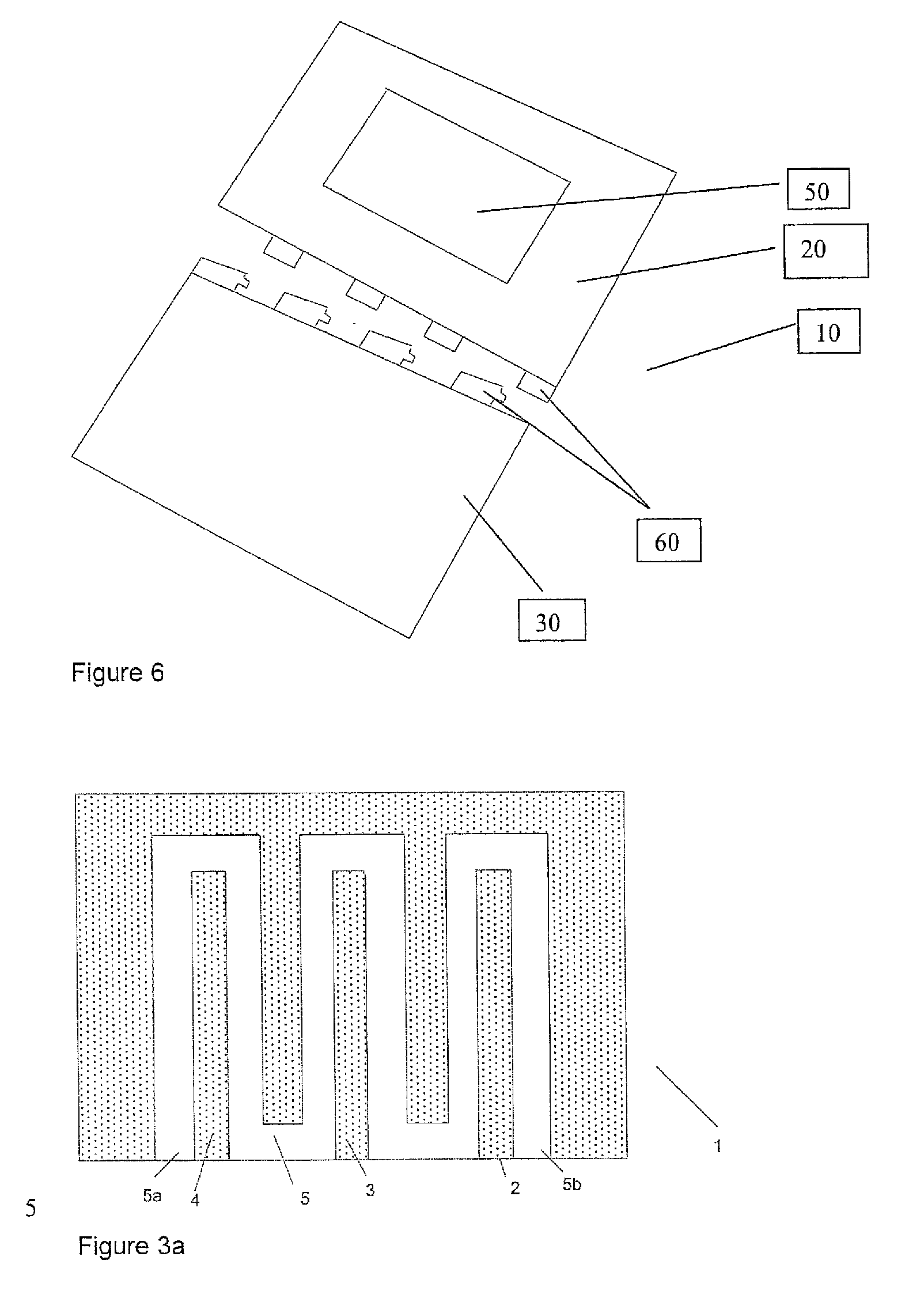Solar thermal panel and method of manufacture
- Summary
- Abstract
- Description
- Claims
- Application Information
AI Technical Summary
Benefits of technology
Problems solved by technology
Method used
Image
Examples
Embodiment Construction
[0037]FIG. 3a is a schematic diagram of a solar thermal panel according to an embodiment of the present invention. The solar thermal panel 1 comprises a body 2 formed from rubber particles 3 bound by a binding agent such as a thermoplastic material 4 (referred to as the “matrix”). The body 2 includes one or more fluid channels 5. The distribution of particles in the matrix is illustrated as being uniform and this is desirable where uniform energy absorption and structural integrity is required; However, non uniform distribution may be beneficial in some cases where the differing physical properties of the matrix and rubber particles could be harnessed advantageously to provide additional features relating to functionality or strength.
[0038]The or each fluid channel includes a fluid inlet 5a and a fluid outlet 5b for connection to a fluid circulation circuit 5c.
[0039]Preferably, the rubber particles 3 comprise a rubber crumb material. Most preferably, the source of the rubber crumb ...
PUM
| Property | Measurement | Unit |
|---|---|---|
| Diameter | aaaaa | aaaaa |
| Diameter | aaaaa | aaaaa |
| Pressure | aaaaa | aaaaa |
Abstract
Description
Claims
Application Information
 Login to View More
Login to View More - R&D
- Intellectual Property
- Life Sciences
- Materials
- Tech Scout
- Unparalleled Data Quality
- Higher Quality Content
- 60% Fewer Hallucinations
Browse by: Latest US Patents, China's latest patents, Technical Efficacy Thesaurus, Application Domain, Technology Topic, Popular Technical Reports.
© 2025 PatSnap. All rights reserved.Legal|Privacy policy|Modern Slavery Act Transparency Statement|Sitemap|About US| Contact US: help@patsnap.com



